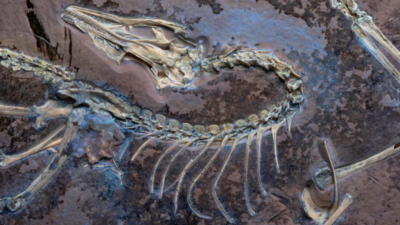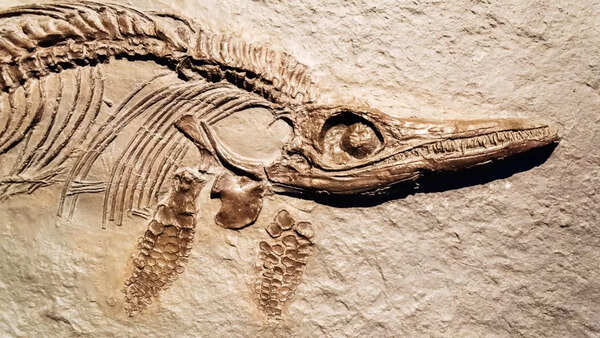
https://x.com/sputnik_TR/status/1924378239989862623/photo/1The world of fossils often moves slowly, bone by bone, layer by layer. But sometimes, certain unique fossils send ripples through the scientific community, giving unknown information about prehistoric life.
These moments aren't just about finding ancient skeletons, instead, they’re about unlocking stories frozen in time. When fossils are found in large numbers, especially from a single event, they can give a clearer picture of how those creatures lived, moved, and even died.Unlike isolated dinosaur skeletons found scattered across the globe, mass fossil sites tell a tale of migration, survival, and sudden catastrophe. They give a rare peek into a day in the life of the Cretaceous period. For fossil researchers, these locations aren’t just dig sites, they’re time treasures, giving the kind of evidence that textbooks can’t always explain
The fossil site in Alberta
Alberta’s Pipestone Creek, is popularly known as the graveyard of Dinosaurs, because it has a dense layer of dinosaur bones, stretching nearly a kilometre, has been unearthed and it may represent one of the greatest fossil finds in North America. The site, which is dominated by remains of the horned dinosaur Pachyrhinosaurus, is unlike anything researchers have seen before.The fossils are tightly packed, so much so that bones are stacked on top of each other. According to the BBC, “Jaw-dropping in terms of its density,” is how Professor Emily Bamforth, who leads the excavation, describes it. While some bones are easily recognisable, like ribs or hip bones, others remain a subject for research. She explains that some are “a great example of a Pipestone Creek mystery.” According to Bamforth, the most likely cause was a sudden flood that wiped out a migrating herd around 73 million years ago.

Fossils are vital for understanding Earth’s history and the evolution of life. They provide evidence of past organisms, their environments, and how species have changed over time. By studying fossils, scientists can reconstruct ancient ecosystems and understand extinction events. Fossils also help in dating rock layers, offering a timeline of geological and biological events. They give insights into climate changes and continental shifts over millions of years. Moreover, fossils are essential in evolutionary biology, confirming links between species and supporting theories like natural selection. In essence, fossils are time capsules that unlock the story of life on Earth.
What is so special about it?
The Pipestone Creek is unique because all the bones seem to belong to the same species and the same moment in time. This rare event allows scientists to study an entire group of dinosaurs at once, giving information about the age, size differences, and herd behaviour. Unlike the individual fossil discoveries that reveal skeletons of a single dinosaur, Pipestone provides a population-level perspective that is important for understanding how these animals lived and moved together.
So far, only a tennis-court-sized area has been excavated. But with over 8,000 bones catalogued and more fossil-rich ground waiting below, researchers believe this is just the beginning and is being managed by the Philip J. Currie Dinosaur Museum, It was however first spotted by a schoolteacher in 1973. Pipestone Creek, is now called the “River of Death” and is becoming a wellspring of ancient knowledge that may change how we understand dinosaur life forever.

 4 days ago
51
4 days ago
51




























 English (US)
English (US)